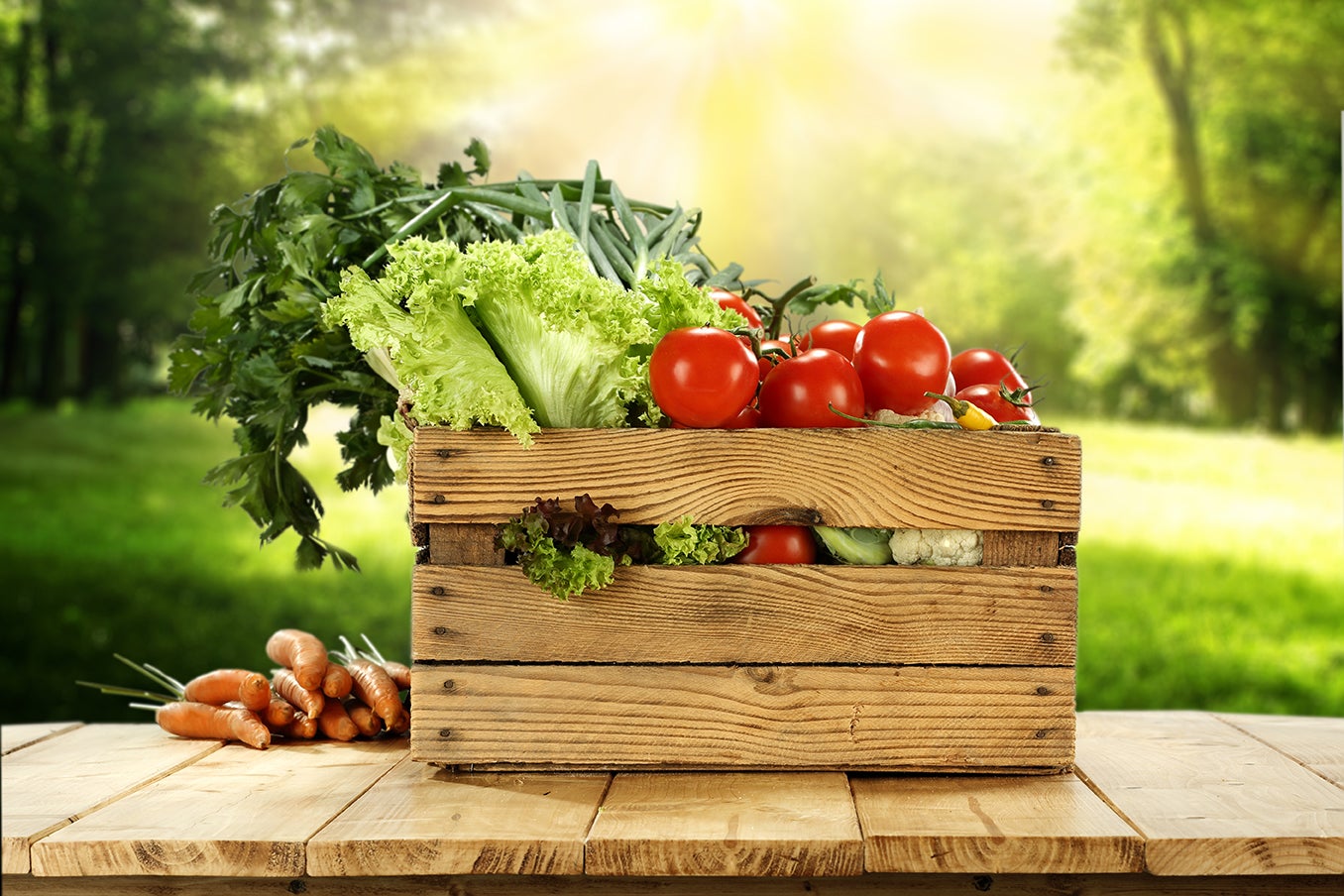8 Storage Tips for Long-Lasting Produce

It happens to the best of us: throwing away precious produce at the end of each week because it went bad before you got around to using it. Whether you purchased too much because of a sale, ordered takeout a bit too frequently, or simply threw it in your fridge and forgot about it, here are eight surefire ways to help minimize waste and always have fresh produce on-hand:
1. Adopt a FIFO mentality.
In the culinary world, FIFO stands for “first in, first out.” Use this mantra to stock everything, especially produce, to ensure the first foods purchased remain up front and ready to grab. “Write directly on packages or use sticky labels to remind you what you bought first, second, and so on,” says Celine Beitchman, the Director of Nutrition at the Institute of Culinary Education, teaching health-supportive culinary arts career classes and professional development courses in culinary nutrition and food therapy. “If you have, say, more than one bag of onions that you purchased on different occasions, put the one you bought second below the first.”
2. Storage placement matters.
The best place to store potatoes, yellow or Spanish onions and heads of garlic is out of the fridge and in a basket away from sunlight, heat and moisture, says Beitchman. Softer root veggies — like beets, radishes, turnips and rutabaga — should be refrigerated or kept in a root cellar. Squashes with thick skins, like acorn and butternut, do well stacked next to the root vegetables; squash with thin skins, such as zucchini, should live in the vegetable bin of your fridge. Store tomatoes on the counter, but not piled on top of one another, and move soft ones to the fridge for later. Melons, orchard fruit (apples and pears), citrus and cucumbers benefit from refrigerator temperatures. Mushrooms should be stored in a crisper drawer in a well-ventilated container, so they don’t dry out. And leafy greens should be wrapped in individual bundles with a slightly damp paper towel to hold in moisture in the fridge.
Related: Make the Most of Summer Produce
3. Give ‘em a wash.
“I recommend soaking vegetables in a large bowl with one tablespoon of white vinegar to clean,” says Michael Scipione, a private chef and owner of Sano Catering, whose TV appearances include Food Network’s Cutthroat Kitchen. “Then rinse under cold water, dry and chop.” The best prep-ahead produce includes broccoli, cauliflower, bell peppers, carrots, celery, asparagus and radishes. Plus, prepping ahead of time means you’re more likely to reach for them throughout the week.
4. Turn scraps into vegetable stock.
After prepping vegetables, there will be ends left from the radishes and carrots, tops of bell peppers, and stems of broccoli, celery and asparagus. “Place all the scraps in a large stockpot, add one large peeled and chopped onion and a bay leaf with a teaspoon of salt, and boil until reduced by half,” says Scipione. “Let the vegetable stock cool, puree in batches in a blender, and store half in the refrigerator and half in the freezer.” Filling an ice cube tray with stock is convenient when you only need a couple of teaspoons of stock as you are sautéing vegetables for a pasta primavera.
Related: Basic Vegetable Stock Recipe
5. Prep some pesto.
The week is coming to an end and you still haven’t used those dark leafy green vegetables? Scipione says to add them to a food processor with a couple tablespoons of your favorite nuts (pistachios or almonds put a nice twist on a traditional pesto). Add salt, pepper and a teaspoon of Dijon mustard, garlic, some fresh lemon zest and the juice of one lemon, drizzling olive oil into the food processor as the veggies are pureeing. Store up to two weeks in the refrigerator. This can be used as a topping for veggie burgers, or a quick toss through some pasta for a quick and convenient meal.
Related: Classic Basil Pesto Recipe
6. Blanch and freeze root veggies.
Preserve flavor and longevity of nutrient-dense roots — such as rutabaga, turnips, butternut squash, and yams — by dicing and then blanching for 4 to 6 minutes. Then cool and portion out in freezer bags.
7. Oven-roast tomatoes.
Too many tomatoes on hand? Scipione suggests preheating an oven to 425, placing two quarts of cherry or grape tomatoes in a deep, oven-safe pan, and adding a few tablespoons of olive oil, a touch of salt, 1/4 cup of balsamic vinegar, 2 tbsp of agave or honey, torn basil leaves and a thinly sliced shallot. Toss all the ingredients together and place in an oven for 20 to 25 minutes until you hear the tomatoes crackle. Add more olive oil after the tomatoes are cooled so that the tomatoes are completely covered in olive oil, and store in the refrigerator for up to 18 days.
8. Sauté and freeze cruciferous veggies.
“Sauté Brussel sprouts, broccoli and red chard individually in olive oil with cleaned and sliced leeks,” says Scipione. “Then add lemon zest directly over the vegetables. When they start to wilt, squeeze in one half of lemon, or whatever citrus fruit you have on-hand. Let cool, add cooked vegetables to a freezer-safe container, and store in the freezer for future use.”
Related: The Best Frozen Foods to Keep Stocked In Your Freezer
“Fill your pantry and fridge with a rainbow of color, texture, and flavors,” says Beitchman. “You may have a general sense of what you will use the produce for, but keeping well-stocked inventory gives you room to find inspiration, be creative, and improvise a little too.”